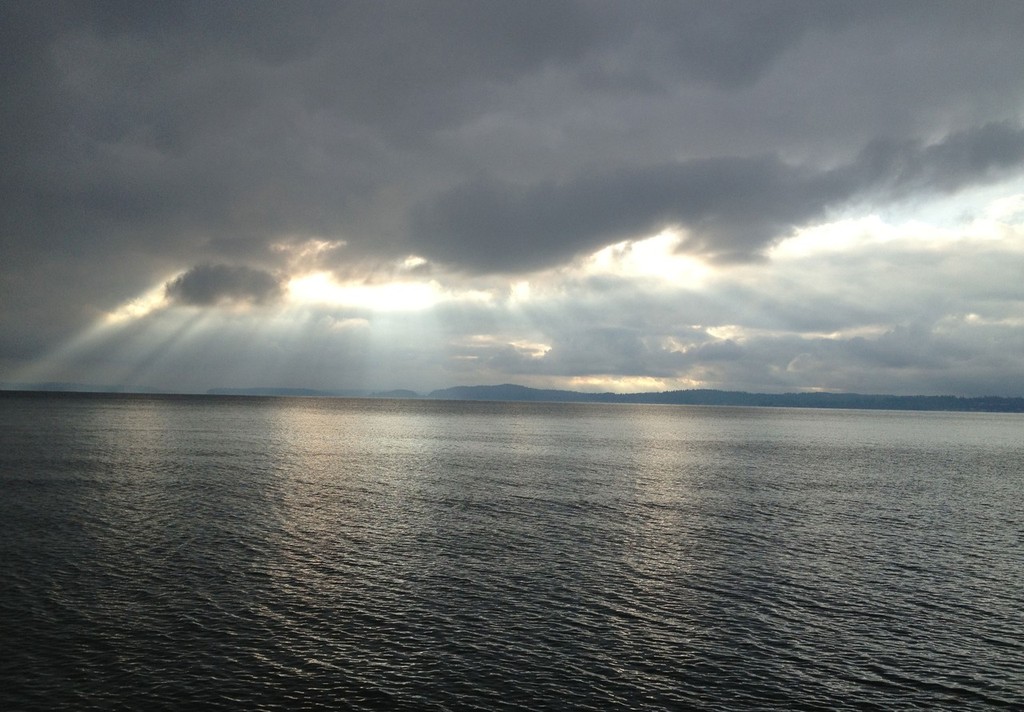The real-world benefits of AIS to cruising sailors
by David Schmidt, Sail-World Cruising Editor on 16 May 2015

The waters of Puget-Sound are often busy with large commercial ships. Luckily, AIS can help lower onboard anxiety during crossing situations David Schmidt
In sailing, the saying often stands that, “what’s new is old and what’s old is new”. Anyone who has been around docks, cruising boats and offshore passages long enough knows that this is true, from hard chines to composite construction (albeit with different materials) to soft shackles. However, one thing that is new (relatively speaking), and which provides a serious safety layer that was previously unimaginable is the Automatic Identification System, or AIS.
This nifty system allows different vessels to automatically report their position (lat/lon), their speed, their bearing, and (type depending) their intended port of call, in addition to other germane information such as the vessel’s name, and its unique, nine-digit Maritime Mobile Service Identity (MMSI). (This later bit is important as it allows vessels to directly call each other, telephone-style, rather than placing blanket VHF calls.)
Most importantly, this information can be overlaid onto a multi-function display (MFD) in order to
dramatically increase situational awareness for all AIS-equipped mariners. And unlike radar, AIS signals can skirt around islands and peninsulas, thus removing the dreaded blind corner.
There are several flavors of AIS, most importantly Class A and Class B units. Class A units were designed for commercial traffic, and these units update their position information every few seconds; Class B AIS was designed for the recreational market and updates its position information every 30 seconds. While the later reporting schedule could be a bit lengthy for a large ocean liner that’s traveling at 20 knots, it’s just fine for a tidy cruiser that’s ambling along at 6 knots.
Additionally, some AIS Class B units are “listen only”, meaning that they gather and display AIS data from other nearby vessels, but they do not generate and broadcast their own position reports. This is especially popular with many cruising sailors, however it’s important to understand that your safety net is essentially halved with this equipment, as the other vessel will be blind to your position (unless they are running radar or have a bow watch).
While I’ve not yet had a chance to use AIS in truly crowded settings such as Malacca Straits, Torres Strait, English Channel, or the Gibraltar Straits, I have used it on the U.S. east coast outside of New York City, as well as off of Miami, Florida, and Annapolis, Maryland, but it’s much closer to my homeport of Seattle, Washington, where I have seen the most benefit from AIS. Seattle ranks as one of the busiest ports on the west coast of the U.S., making the waters of Puget Sound thick with “heavy metal”. Couple this with constant ferry traffic, and the situation gets fraught, quickly.
Next, factor-in Seattle’s stereotypical weather (read: rainy, cloudy and with limited visibility due to fog) and you can quickly start to appreciate a cruising scene where boaters are constantly having to dodge large ships and ferries, sometimes with less notice than is otherwise ideal. While radar certainly helps, Puget Sound has enough islands and peninsula features to make it perfectly suited to AIS. Now, with the benefit of AIS, dodging heavy maritime traffic is a matter of paying close attention to the AIS screen, while also maintaining a sharp lookout abovedecks and an alert hand at the helm.
While AIS is a no-brainer in the Pacific Northwest, I find it to be indispensable safety equipment for any coastal cruise. Take, for example, the time two years ago when we were approaching the Cape Cod Canal in Massachusetts, en route to Maine’s Downeast cruising grounds, in less than ideal visibility. Vessels were transiting in all directions, mostly small craft but with some larger vessels stirred into the mix. Rather than let anxiety levels rise, we simply stationed a bow watch (that would be me), a man at the helm, and another bloke (we’ll call him “Dad”) monitoring the AIS. Situation negotiated, sans any navigational confusion.
The same story has replayed itself countless times as I have approached ports of call ranging from Seattle to Vancouver to Miami, all with the same cool, calm and collected results. The only drawback? To achieve the benefits of AIS, each vessel must be equipped with the system, the gear must be powered-on, and each owner must properly install and network their AIS (including correctly obtaining and programming the vessel-specific MMSI number).
Fortunately, these are not high hurdles to clear, and the added safety and situational awareness that AIS affords is well-worth any equipment or installation costs, especially when the fog turns to pea soup, and when you know that the shipping lanes are pregnant with heavy metal.
If you want to link to this article then please use this URL: www.sail-world.com/134336